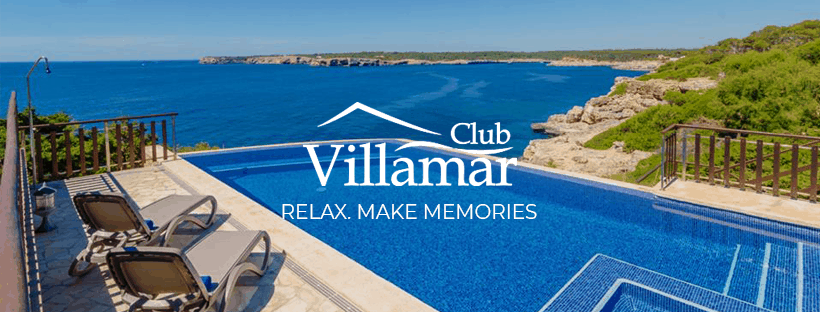
If you want to go on holiday to Lloret de Mar, there are several options for traveling. So you can choose it plane, the train, the bus, but also by car to Lloret de Mar. to travel. However, in this article I will go deeper into traveling to Lloret de Mar by car. For example, how long does the journey to Lloret take, what are the costs, the toll roads, which routes you can take, but also what you have to take into account en route and in Spain. So if you are planning your car trip to Spain or are you thinking about going to Lloret de Mar by car, then please read this article first.
The best route to Lloret de Mar.
To reach Lloret de Mar you can follow different routes. Which route is best depends of course on your start and end point, whether there are many road works at that time, but also whether you want to see or do something along the way. However, many tourists on their way to Lloret de Mar prefer the roads around Paris (sure in high season), due to the extreme crowds. For this reason, most people choose the well-known Route Du Soleil.
Route Du Soleil vs Paris - Clermont-Ferrand
At the Route Du Soleil You leave the Netherlands via Maastricht and drive via the places Liège, Luxembourg, Dijon and Lyon to the south of France. The big advantage of this route is that you have more options to stop on the way than if you choose the route via Paris and Clermont-Ferrand. Also, although you are also on the Route Du Soleil must take into account crowds at various pieces, it is generally less crowded than when you travel through Paris. Another big disadvantage of the route via Paris and Clermont-Ferrand is the many hills you encounter on your way to Lloret de Mar.
Finally, you can also decide to start the road to Route Du Soleil differently, partly to avoid the hills near Liège. In this case, you can choose to via Antwerp and Brussels to Luxembourg to drive. In addition, you not only avoid the hills near Liège, you can also refill your tank in Luxembourg at an affordable price.

How long is the drive to Lloret de Mar?
If you choose to go to Lloret de Mar by car, keep in mind that the distance from the Netherlands is almost 1500 km. With some very short stops, for a sandwich and to refuel, it is soon such from Utrecht 14 hours drive to Lloret de Mar..
Most people will therefore choose to bridge this distance in two days. In that case you have to think about an overnight stay, which entails additional costs. Make the trip part of your holiday and you'll be with you before you know it villa or apartment in Lloret arrived!
What does it cost to go to Lloret de Mar by car.
Driving to Lloret de Mar can be a very cheap option. This of course depends on how many people you go to Lloret de Mar with, if you need an overnight stay and whether you bring your own food or have dinner somewhere along the way. On the other hand, it does make a difference in the costs in Lloret de Mar itself, after all, you have your own transport and are not dependent on transfer costs to and from your holiday home. You are also not dependent on the taxi or public transport, which of course also costs money with a family or group of friends.
Due to the current low fuel prices, especially in Belgium, France and Spain itself, costs a single car trip to Lloret de Mar about € 120, - and return € 240, - (reference year 2020). In this calculation, we have assumed an average petrol price of € 1.30 per liter and a consumption of 1/13. If you drive on gas or diesel or drive your car more economically than 1/13, the costs will be even lower! If you want to know the exact consumption tailored to your car, click here. Are you going on vacation with several people, you can of course also divide these costs!
Toll roads on the route to Lloret de Mar
During your trip to Spain, you will encounter toll roads on the way, in both Spain and France. It is certainly important to take this into account in your costs, because you are not there with only petrol costs.
Toll in France:

In France, unlike Austria, for example, you do not need a special car vignette. Also, not all roads in France are toll roads, so you only have to pay the toll on the toll routes, however, most French highways that lead to Lloret Mar are toll routes, so you will encounter several on the way to Lloret. You have to pay the toll in France as soon as you leave a toll route.
It is also important to take into account that you cannot simply pay toll everywhere in France with your bank card. So it is wise to always cash or a credit card to have with you for paying the toll. The easiest option, however, is to purchase a toll badge.
With the so-called toll badge, a box that you can attach behind the forward, you can pay electronic toll on both the highways in France and Spain. The toll costs are then automatically debited afterwards. Moreover, with this toll badge in France and Spain you can also pay at more than 300 parking lots and garages!
Another great advantage of the toll badge is that you can join the toll gates at the “télépéage” gates (Liber-t). The barrier goes up automatically immediately, so that you are no longer in the long queue for the toll gate, especially in the high season, and you do not have to worry about having contact money or a credit card. You can buy this toll badge simply and easily at the ANWB, for a one-off € 11 + € 2.50 per month.
Costs toll in France
If you use the toll roads in France, keep in mind that you about € 71, - for a single journey with passenger car, € 142, - return (reference year 2020). If you travel with a caravan or camper, the costs are higher! Of course you can also avoid the French toll roads by driving on the smaller Routes Nationales and Routes Departementales. However, it will take you at least 3 hours longer to get to Lloret de Mar.
Toll roads Spain
Also in Spain you do not need a special car vignette. Most of the roads in Spain are also just free, but some roads require tolls. There is also in Spain always an alternative or B-route (the smaller autovías that usually runs parallel to the highway) which is completely free, partly because the toll roads in Spain are relatively expensive.
For this reason, the toll roads in Spain are also relatively quiet, people who do not want to pay a toll are more likely to take the alternative routes, which are automatically busier. You can recognize the toll roads by the fact that they start with AP or in Catalonia with C-32 or C-33.
Costs toll Spain
If you use the toll roads in Spain to get to Lloret de Mar, keep in mind that you will lose approximately € 17 for a single journey with a passenger car and € 34 return (reference year 2020). If you travel with a caravan or camper, the costs are higher! If you have purchased a toll badge from the ANWB, you can also use it in Spain without any problems!
Total costs for a return trip to Lloret de Mar by car

The total fuel and toll price, based on the above indication, for a return ticket Lloret de Mar amounts to € 382. If you travel with several people, you will soon conclude that a car trip to Lloret de Mar, compared to the plane, is actually very cheap. Like Lloret de Mar itself is very cheap! In addition to these travel costs, you have even more (financial) advantages by car.
Ins:
- You have no gas, bus or train costs to and from the airport
- You have no parking costs at the airport
- You have no transfer costs, because the car takes you from door to door
- You always have transport on hand, so no additional transport costs, but also easy if you want to go shopping or view the area
- You can take a lot of extra stuff with you, because there is no limit to a suitcase of up to 15 / 20kg
Cons:
- If you do not want to bridge the road to Lloret in 1 day, you will have to book an overnight stay in a (stage) hotel, B&B or motel for the entire travel group. Another (cheaper) option is to bring a tent and spend a night on a transitcamping. However, this makes the journey both longer and more expensive. overnight makes the trip considerably longer (and more expensive)
- During your car trip you have the chance of long waiting times in traffic jams, especially in high season on the French Route du Soleil.
- Extra costs on the way; during your long journey you must of course also eat and drink well to cover such a long distance. Of course you can choose to take home as much as possible, but a possible hot meal can still mean extra costs.
Want to save even more costs?
If you carefully plan your trip, you can save even more on the aforementioned petrol prices. For example, if you decide to travel to Lloret de Mar, it is wise to refuel not just in the Netherlands, but just across the border in Belgium. Petrol prices in Belgium are much lower than in the Netherlands.
If you happen to travel to Lloret de Mar via Luxembourg, it is wise to fill your tank here again. The gasoline prices in Luxembourg are again a lot cheaper than Belgium and France. It is also a good idea to stop refueling in France when you are almost in Spain. In Spain, petrol is also much cheaper than in France. This way you can save tens of euros on your car trip to and from Lloret de Mar.
Practical information and Traffic rules

If you choose to go by car Lloret de Mar te then it may also be good to observe the Spanish traffic rules. In the base are the traffic rules in Spain the same as in the Netherlands. However, there are a few important points to keep in mind when participating in traffic:
- In Spain you must have a valid driver's license and an insurance policy with proof of the validity of the insurance.
- In Spain, a Spanish vehicle must carry 2 warning triangles, a reflective vest and spare wheel, so it is recommended that you do this as a tourist.
- In Spain, the rule is that the driver must have control of the vehicle at all times, full freedom of movement, a clear field of vision and constant attention while driving. Based on these rules, as a driver you can already be fined if you eat or drink something behind the wheel, smoke a cigarette, apply make-up, take something out of the glove compartment, have bare feet, wear flip-flops or wear swimwear.
- Calling behind the wheel or holding a phone in your hand is prohibited by law in Spain, even if you are standing still in front of a traffic light. Hands-free is allowed, but without earplugs.
Emergencies and emergency numbers

If you have problems with your vehicle, your accommodation or if you have theft or illness, please always contact your insurance company, if you are of course insured for this. It is therefore always advisable to view your insurance policies before departure and to be aware of exactly what your insurance policies cover. So do not forget to bring the contact details of your insurer or intermediary. In addition, it is also important to have the contact details of your bank with you. This way they can offer direct support in case of loss, theft or fraud.
For more information on how to respond in case of theft or loss of personal documents, consult the website of the Dutch consulate located in Barcelona.
Emergency numbers
As in the Netherlands, you can also call the general emergency number 112 in Spain, if there is a major problem, even if your provider does not cover calling in Spain. Do you have the fire brigade, ambulance or police call the numbers below: .
- Police: 091.
- Ambulance: 061.
- Fire brigade: 080.
Finally, the contact center of the Ministry of Foreign Affairs is also available 24 hours a day, 7 days a week for information or in case of emergency on telephone number +31 247 247 247.
You are now ready and ready to start your car holiday Lloret de Mar , it Lloret Nightlife , Beach and see sights to plan. However, do you want to know more about Lloret de Mar, and how you can experience a Top Holiday in Lloret de Mar? Then read further at 21 Tips for a Top Holiday in Lloret de Mar and Things to do in Lloret de Mar!

